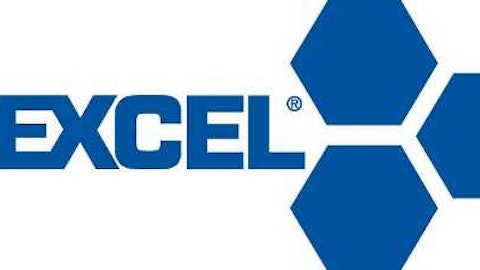Most thought it’d be avoided, or that Congress would come up with a solution at the last possible moment. But here we are in June, and sequestration is still in effect. More importantly, top Pentagon officials are now saying sequestration will probably continue through 2014. While sequestration hasn’t yet had a catastrophic impact on defense stocks, the continued implementation of defense cuts could put the squeeze on defense profits and, consequently, their stocks. Here’s what investors should prepare for.

Photo Credit: kenteegardin via Compfight.
The “grand bargain” that never was
On Thursday, the House Armed Service Committee, or HASC, approved a 2014 defense budget. However, there’s one teeny problem: The proposed budget ignores forced cuts from sequestration. Why? Because the military is already hurting when it comes to mission readiness, and cutting “must haves” like a new fighter, new ships, improved missile capabilities, and trained troops could put the military in an even more precarious position.
Some of the programs the Pentagon considers essential are Lockheed Martin Corporation (NYSE:LMT)‘s F-35 fighter program, Northrop Grumman Corporation (NYSE:NOC)‘s RQ-4 Global Hawk drones, and Huntington Ingalls Industries Inc (NYSE:HII)‘ CVN-78 aircraft carrier. There’s also the desire to have the Missile Defense Agency build an East Coast missile shield to protect against escalating nuclear threats from Iran, a project that would probably benefit three outfits:

2). Raytheon Company (NYSE:RTN) which builds the SM-3, a defense weapon used to destroy incoming ballistic missiles.
3). Northrop, the MDA’s prime contractor on the Joint National Integration Center, a simulation and war-game center that provides answers to missile defense capabilities.
All of these programs are “essential” to the military, and funding them is a top priority. Unfortunately, sequestration doesn’t care about “essential” needs. What it cares about is across-the-board cuts.
What to look out for
The current approved budget by the HASC should act as a warning to defense investors. And while that may sound counterintuitive, here’s why I say it: Most people thought sequestration wouldn’t be implemented, and if it was, it’d quickly be replaced by a new solution. Clearly, neither has happened, and now, defense spending is in a quandary; it has to be cut, but no one knows how to do so without gutting the military’s capabilities. So officials are operating as if the 2014 budget, which is set to start in October, won’t be affected by forced cuts.
I don’t know about you, but my confidence that Congress will finally come to a “grand bargain” is running thin. As such, I think it’s best to prepare for the possibility that sequestration may be around for a while.
As I’ve said before, the nature of defense contract awards gives defense companies some insulation from an immediate negative impact from sequestration. But that doesn’t mean they’re immune. The absence of a “grand bargain” to replace sequestration means that even programs that are “essential” could face cuts. That means that over time, defense profits will decline, which could negatively affect defense companies’ stock.
What next?
So is it time to sell? No. At least not defense giants’ stock. Yes, the Pentagon is in a bind, and the continuation of sequestration is starting to show how defense cuts are getting more and more painful. However, even with drastic cuts, defense giants are fully capable of surviving sequestration, and rebounding in the long run. That doesn’t mean their stock won’t suffer. If sequestration continues on its present course, investors would do well to take that into consideration when looking at profits in quarterly and annual reports; it could be nasty for a while.



